The One-Night Glock Clone: Strike Arms SAP-C DIY Build Review

The Glock clone market is alive and well and in a lot of ways is continuing to grow at an exponential rate. From the looks of things at SHOT Show 2025, the sheer amount of parts, options, and even serialized frames that are available for this common pistol footprint is not going to stop. In a lot of ways, the Glock Gen 3 clone market has reached the amount of customization options and DIY accessibility as the AR-15 market has. So it's only natural that Strike Industries would start their own firearms brand - Strike Arms (more about that here). I’ve been fortunate enough to receive not only one of the new Strike Arms SAP-C serialized frames, but Strike Industries was also kind enough to send along every other part needed for a DIY build - similar to what you’d do if you had ordered a bunch of AR-15 parts off of PSA. Today we’ll go over the cost of all the parts, what they offer compared to a stock Glock, and hopefully demonstrate just how easy it is to go from a box of parts into a functioning pistol in just one evening.
More from Strike Industries @ TFB:
The One-Night Glock Clone: Strike Arms SAP-C DIY Build Review
Going over cost first, no one is going to argue that going the Strike Arms route is going to be less expensive than just buying an off-the-shelf Glock Gen 3. You can find those for about $500 in new condition and for about half that in used condition. What Strike Arms and Strike Industries are trying to offer customers here is a way to have the satisfaction of building their own gun while having access to modern features that allow even more customization - most notably the 4-slot dust cover rail, and the ability to mount optics right out of the box through the use of the Strike Slide. Below is a list of items they sent and their associated cost.
- Strike Arms Pistol Compact Frame (SAP-C): $149.95
- LITESLIDE for GLOCK™ G17 or G19 GEN3: $249.95
- Strike Barrel for GLOCK™ G17 or G19: $197.95
- Slide Completion Kit for GLOCK™ G17 or G19 GEN3: $69.95
- (2X)Aluminum Extended Magazine Plate for GLOCK™ G19 (9mm): $77.90
- (2X)Strike Magazine for GLOCK® G19 (9mm): $23.90
Total Strike Build Cost: $769.60
The way I see it, you’re getting the same functionality and upgrades that you’d normally get from a Glock Gen 5 MOS pistol, but with a much more flexible options mounting solution, as well as an aesthetic that is different enough from the traditional blocky Glock look, but also isn’t as zany as some of the more “Gucci Glocks” that are floating around out there that I personally don’t have a taste for. Obviously, most of that $770 value for me is largely also going to depend on how reliable and durable the pistol is, which we’ll go over in a future article after I’ve had plenty of time to abuse the SAP-C.
Assembling The Gun
Having grown up in a family that very much valued the 1911, as well as the M9 pistols, I was an early adopter as an adult of both and I’ve had my fair share of at-home gunsmithing nightmares with both as well. When I picked up my first Glock (an old LE trade-in G17) I was astonished at just how simple the slide assembly and fire control assembly were. This is partially what makes the Glock Gen 3 such a great DIY gun - it’s really simple to put together and with all of the parts listed above you’ll have a functioning Glock with about 30 minutes or so of assembly time.
Firing Pin Assembly
The first thing you’ll want to do is construct the firing pin assembly, so you’ll need to gather your two spring cups, the firing pin, channel liner, firing pin spring, and the spacer sleeve.
- Put the spacer over the firing pin with the cut-out sliding over the hook on the firing pin
- Slide the spring over the firing pin, compress it and then insert the spring cups into the end of the spring to retain the entire assembly.
Extractor Assembly
Once this is done, you’ll then set it aside to be installed inside of the slide later. Next, I typically like to get the extractor components together and assembled as they’ll go into the slide as one piece like the firing pin. To assemble the extractor assembly simply:
- Insert the narrow end of the black plastic bearing into the spring
- Insert the round pointed end of the plunger into the other end of the spring
- Set aside with firing pin assembly
Firing Pin Channel Liner
After this, you’ll want to take the firing pin channel liner that comes with your slide completion kit and insert it into your slide. You can do this with the included tool and you may or may not have to use a small light hammer and a few light taps to properly seat the firing pin channel liner (if you don’t have a channel liner tool, you can also use a 7/32 round punch. The only thing to note here is that the rounded or beveled end of the channel liner should go into the slide first with the more flat side of the liner being the end that faces you when you look at the rear of the slide.
Firing Pin Safety and Firing Pin Assembly Installation
The firing pin safety plunger looks sort of like an uneven barbell and is always inserted with the beveled end facing out toward the bottom of the slide. Simply combine the firing pin safety and its associated spring and drop them into the Strike Slide.
After this, you’ll want to apply a tiny bit of pressure with your thumb while you simultaneously insert the firing pin assembly into the firing pin channel with the raised portion of the firing pin facing down. You’ll know that you’ve inserted the firing pin assembly far enough into the channel when you let go of the firing pin safety plunger pressure and everything stays in place. Once this is done, you can move on to installing the extractor and the plunger we assembled earlier.
Extractor Plunger and Extractor Installation
Your gun will technically work without these parts, but your pistol will be a one-shot wonder without them, so it's best to get this part right on the first try, so you’re not waiting another few days for new parts to arrive.
All you need to do is drop the extractor into the slide with the rounded end matching up with the rounded hole inside of the slide's ejection side. It’s virtually impossible to misalign this part. Once that’s seated you’ll want to hold the extractor in place while you insert the plunger spring, bearing, and plunger into the rear of the slide through the small hole on the top right-hand side of the rear of the slide where the cover plate goes. The plunger assembly should gently hold the extractor in place.
The next part can be tricky without a properly secured pistol, so if you have a small vise or pistol block, now is the time to use it. For this part, it’s also handy to have a small punch and a light armorer hammer handy as well. The last piece of most of this puzzle is the slide cover plate which I found to fit quite tight on the Strike slide. You have to maneuver this part in while you depress both the firing pin assembly and extractor assembly. To do this simply use the punch to depress the rounded parts in the rear of the slide, and tap the pre-staged slide cover plate in till everything lines up.
Final Pistol Assembly
After the slide assembly is all put together, you’ll essentially have a field-stripped Glock pistol. In the case of the Strike Liteslide, there is an included optics cover plate for those of you who don’t want to use a red dot. The slide itself is cut for standard Glock pistol sides, so I decided to use some Tyrant CNC Night Fission sights to fill in the gaps. I ended up slapping on my Trijicon RMR HD using the included optic mounting hardware and then I put the pistol together like you would any other 9mm Glock.
Strike Mags
Strike Industries also sent along two Strike mags for testing with the pistol. What I like about these is that they are much easier to disassemble than standard OEM Glock mags, making them much better candidates for baseplate upgrades than OEM mags. Strike mags are about $12 a piece and are probably not as durable as OEM Glock mags, but in my testing so far at the range they’ve held up pretty well with the attached baseplates.
Of course, with the Strike Arms SAP-C, you can use standard Glock mags. I’ve tested out the pistol functions at home with OEM Mags, Extar Mags, and P-Mags without any issues. We’ll test those again at the range to see how they compare or if they alter the performance of the pistol at all.
Final Thoughts On the Build
I found the process of putting together a Glock for myself from just a box of parts pretty satisfying. I think a kit like this, as well as a Strike Arms SAP-C frame, would be a great gift for a budding gunsmith or a family member who just loves to put together guns. There isn’t anything too difficult about putting one of these together and unlike assembling an AR-15, putting together a Glock runs significantly less risk of losing springs and detents… mostly because there are much fewer of them or none at all.
The complete Strike Arms build isn’t a budget build but it’s one that I think gives you a few visual and functional upgrades over a standard Gen 3 Glock, and also looks good doing it. In our next article about the SAP-C, we’ll take it to the range and I’ll share my thoughts on its slightly different ergonomics, its added accessory capabilities, and of course, its reliability when compared to a standard off-the-shelf Glock pistol.

Reloader SCSA Competitor Certified Pilot Currently able to pass himself off as the second cousin twice removed of Joe Flanigan. Instagram: https://www.instagram.com/ballisticaviation/
More by Luke C.

























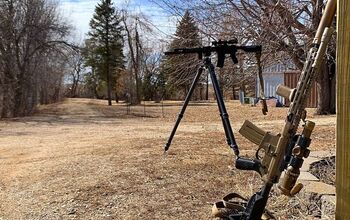
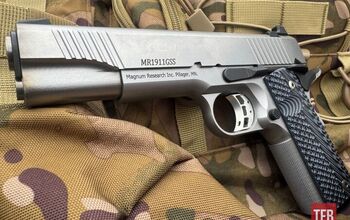

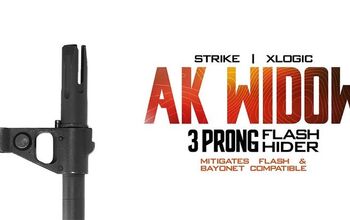


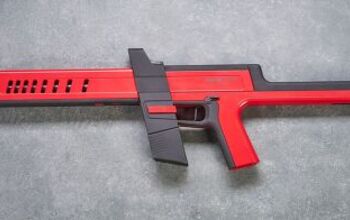
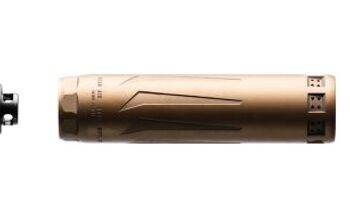

![[SHOT 2025] Insite Armory Producing SVD Dragunov Clone In USA](https://cdn-fastly.thefirearmblog.com/media/2025/01/24/17561/shot-2025-insite-armory-produing-svd-dragunov-clone-in-usa.jpg?size=350x220)


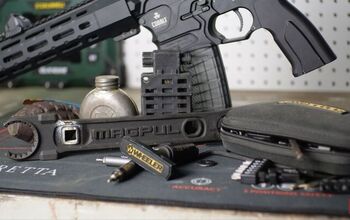
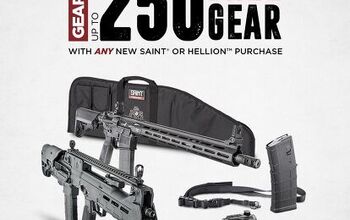


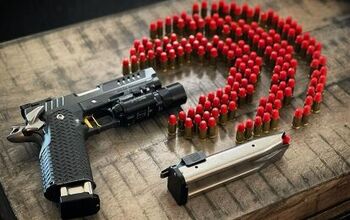

Comments
Join the conversation
Good read, being the endless tinkerer I am, I have done a few PMF's, the process is not hard, however if you aren't that tinkerer, take your time, the biggest spoiler is being in a hurry.
Interesting, that in over 30 years as a gunsmith, the LEAST RELIABLE Glocks I've seen are the ones that are MOST MODIFIED !
When a customer would bring in a mal-functioning Glock, my very 1st question would be "Did it work BEFORE you ""improved"" it ?" Invariably the answer was yes.
Most people read too many magazine articles and get the hot idea that there's something wrong with a Glock.
A personal friend, now retired, was a member of Germany's GSG 9 anti-terrorist group. Their 1st G-17 was fired over FOUR MILLION ROUNDS, using NATO spec ammo. At 3mil, 800,000 it FINALLY failed to meet the NATO accuracy criteria of all shots in a 100mm (4") circle @ 50 Meters.
Let that sink in, this pistol was used daily, and the only things changed were 2 extractors. Per their standard, all springs were replaced @ 50,000 round intervals, as springs are considered a wear out item.
So seeing folks "improve" a Glock is, to me, quite humorous.
I've built full-out Racing Glocks for USPSA Open class, and like mast race guns, they require constant maintenance.
If you plan to carry, STOCK IS BEST ! I also informed my CCW students that under NO circumstances do you want to carry a modified gun. Sight upgrades are OK, but nothing else and NO HANDLOADS, quality factory defensive loads; I like Gold Dot or Hydra-Shok, both have been 100& reliable in my Glocks (10MM & .45ACP)
OK, off my soapbox 😁
uncle albert